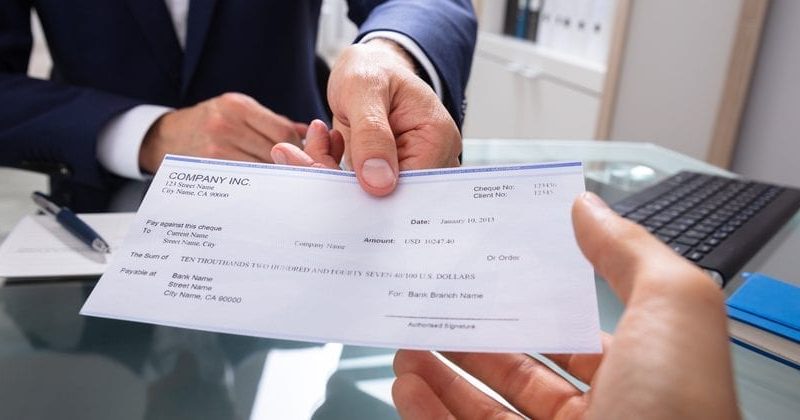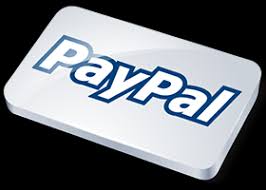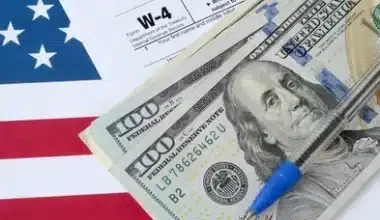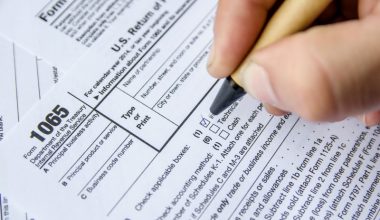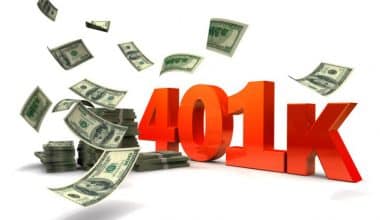Most of our financial transactions are now done digitally, either with a debit or credit card, an ACH transaction, or an online or mobile payment app. However, even in the modern world, you may need to submit or receive a paper check to complete a transaction—and it’s critical to grasp the differences between the numerous types of checks you may encounter. A certified check is a secure payment method that is accepted at banks and credit unions. We’ve assembled all of the information you’ll need to know about converting a personal check to a certified check. Continue reading to learn what a certified check is and how to obtain one in a bank or anywhere else.
What is a Certified Check?
A certified check is a personal check that the payer’s bank has certified as valid and has set aside funds for the check. It’s considered an “official” payment. People frequently mix up certified checks and cashier’s checks. So, what exactly is the distinction between a certified check and a cashier’s check?
A certified check is a personal check that has been certified by the bank and is drawn on personal funds. The certification process physically marks the check as a certified check and earmarks the cash for that check. The majority of banks will not release those funds for any other purpose.
A cashier’s check is a bank-backed check. The bank receives the monies from the person requesting the cashier’s check and places them in escrow, which is a special account used to cover the check amount. The bank then prints a check against the funds in its possession. Certified checks and cashier’s checks are both “official” checks with “guaranteed” monies.
The Advantages of Using a Certified Check
When purchasing expensive things, a certified check comes in handy. It’s impractical and unsafe to have that much cash on you if you’re buying an expensive appliance or making house improvements. It’s more convenient and safer to write a check, but the payee may want extra safeguards than a standard personal check provides. The recipient of a certified check understands that the bank has confirmed the check, signature, and availability of money. It is a reliable source of funds.
The process of certifying a check verifies the following:
- The individual who writes the check is authorized to write checks on that account.
- The check is genuine and has not been cleaned or chemically modified.
- The signature is a genuine signature.
- The account is currently operational and in good standing.
- The funds are available and will be set aside for that check for a set period of time.
However, certified checks might still be fraudulent. Legitimate certified checks are guaranteed funds; but, if a scam artist has constructed a fake check, forged the signature, and forged the certification marks, it is a forged or bad check that you should not attempt to cash or deposit.
Are there any Disadvantages to Using a Certified Check?
While certified checks can be a simple way to make a significant transaction, they do have certain drawbacks. Here are a few examples.
#1. Your funds are not sent as promptly.
A certified check works in the same way as a typical personal check, which means it will take a few days for the check to clear. Cashier’s checks that are paid by the bank clear significantly faster. If you need the money quickly, you should consider another choice.
#2. You might not be able to stop payment.
If you put the erroneous number on a personal check or need to cancel it for another reason, you can contact your bank to stop the payment. However, after a check has been certified, it may be impossible to halt payment on it. Alternatively, unless you meet certain standards, it may be impossible to cancel the payment (say, the check was lost or stolen).
#3. You will be charged a fee.
A fee is frequently charged by financial institutions to certify a check.
#4. A certified check is difficult to replace.
If you misplace your certified check, you must go through a lengthy process to obtain a replacement. You’ll very certainly need to fill out an affidavit claiming that the check was misplaced, as well as papers to stop payment on it.
#5. You must visit a branch.
To obtain a certified check, you must normally visit a bank branch, which might be inconvenient if you do not live nearby.
#6. Certified checks can be forged.
Although certified checks may appear to be more secure, they can still be falsified or counterfeited. Keep an eye out for frauds – even if you’ve received a certified check, you should be cautious.
Where can I obtain a certified check?
There are just two locations where you can obtain a certified check, however, there may be other options.
#1. Banks
Your local bank is usually the best place to get a certified check. Many times, if you already have a banking relationship, you can avoid the fee. Banks may not charge a fee for certified checks in specific instances. However, be aware that some institutions no longer provide certified checks. Expect these banks to give cashier’s checks instead.
#2. Credit Unions
Credit unions are well-known for their low costs. If you have a credit union account, you should consider utilizing it to fund the certified check.
#3. USPS
Because a certified check is written on an existing checking account, the US Postal Service does not offer certified checks. Money orders, on the other hand, can be purchased through the USPS. Current rules limit the face value of a single USPS money order to $1,000. In cases where a big payment is not required, the recipient may accept a USPS money order instead.
#4. Online Banks
A certified check is available from many online bank. Because there is no teller or physical location, the bank is unable to authenticate checks, which necessitates in-person verification of your identification and signature. The payee may take a cashier’s check instead of a certified check in several instances.
How can I obtain a Certified Check?
Follow these simple steps if you require a certified check.
- Before requesting a check, make sure you have the payee’s name and the precise amount. When it comes to having a certified check, precision is everything. It is critical to get the details correct the first time.
- Pay a visit to your local branch and write the check in front of a bank teller. The teller must verify your signature as part of the process of getting a check certified. They can verify that you are the one who requested certification and signed the check if you write the check in front of the teller.
- Display a government-issued photo ID. You can use your driver’s license for this, but you can also use a passport to establish your identification while acquiring a certified check.
- Wait for the teller to verify the funds and stamp your check as certified. This is often a quick procedure.
- To certify the check, pay the check amount plus the cost. Certified checks are not charged at all by some banks and credit unions. Others, though, do. Expect to spend between $5 and $15 if your bank charges a fee.
- Keep the receipt in your possession until the check clears your account. Depending on the nature of the transaction, it may be prudent to hold the receipt permanently. If you used the certified check to buy a car or make a down payment on a house, retain the receipt with your other transaction papers.
How Safe is a Certified Check?
Because the funds are guaranteed, the security features of a certified check primarily benefit the payee rather than the payor. A certified check, on the other hand, can be a safer option for carrying a significant quantity of cash to pay for a transaction.
Of course, a certified check can also be mailed or delivered by courier, something you would not want to do with cash.
How to Avoid Check Fraud Using Certified Checks
People choose to use certified checks for three reasons: to help ensure security, to protect against fraud, and to reduce bounced checks for large transactions. Using a certified check might provide a seller with greater assurance that they will get paid. However, there are a few things to keep an eye out for in order to avoid fraud with certified checks:
- If you are the recipient of a certified check, contact the bank as soon as possible. Don’t call the bank’s phone number that is printed on the check; if the check is false, so is the number. Alternatively, you can check up the bank online.
- Request that the bank confirms the account holder’s name and check number.
Counterfeiters are growing increasingly skilled at printing official-looking bank logos and producing physically plausible counterfeit checks. While a certified check is normally more secure than a standard personal check, you may want to take extra precautions to ensure that the check is genuine before releasing the acquired goods.
Why Are Certified Checks Important?
With so many different online payment tools and payment options accessible today, many people may prefer not to use a traditional personal check. For example, if you’re selling a used automobile for a considerable sum of money—or if you’re trading with someone you’ve only met online—you might prefer to get paid using an online payment app so that you have rapid access to the money.
However, if your transaction exceeds the daily limit of an online payment app and you don’t want to carry cash or pay a credit card transaction fee, a certified check can be a suitable solution to safeguard both parties.
As the seller, you have the right and the obligation to ensure that a certified check is genuine. Don’t be hesitant to phone the bank immediately away, in front of the buyer, to ensure that the check is correct and legitimate.
Even if there are more ways to receive paid than ever before, there are situations when a personal check is required. Using a certified check for large, critical transactions can help to provide an added level of protection and certainty that the check will clear as promised. This is why official checks, whether certified checks or cashier’s checks, can still be used for banking purposes. Speak with your bank or credit union to learn more about your check-certification alternatives.
Certified Check vs Cashiers’ Check vs Personal Check
Here’s an explanation of the distinctions between a personal check, a certified check, and a cashier’s check.
Personal Check
Most banking customers are probably familiar with the personal check. With a few exceptions, most checking accounts still allow you to purchase personal checks to use to make payments—and some checking accounts even offer complimentary checks to account holders.
Personal checks are slips of paper issued by your bank that contain your bank routing and account information. The date, payee, check amount, and signature line are all left blank for the account holder to fill out at the time of payment. When you pay by check, your payee puts your check into their account. The funds are subsequently sent to the recipient’s account by your bank.
While check writing is becoming somewhat of a lost art, knowing how to write a check, endorse a check, and read a check is still useful for banking consumers. You may encounter a number of situations that need payment or receipt of payment through a personal check. Landlords and rental companies, for example, may request paper checks. Furthermore, some merchants impose a fee or extra for using a credit card. Alternatively, some landlords provide discounts to customers who pay with cash or a personal check.
Read Also: ENDORSE A CHECK: How to Endorse a Check to Someone Hitch-free
Given that 10% of American people do not use the internet, check writing is a required payment technique for anyone who is not connected to the internet.
Personal checks also provide some amount of security. Because checks require the payee’s signature or endorsement before being deposited, losing a check is not the same as losing a comparable amount of cash. To prevent the money from being deposited by someone else, the check writer might place a stop payment on a lost check. Furthermore, paying by personal check gives proof of payment because the bank retains copies of canceled checks (checks which have already had the funds transferred).
Personal checks do, however, have one significant disadvantage for recipients: there is no guarantee that the account from which the check is taken has sufficient cash to pay the check’s amount. Writing a check for an amount that the account cannot cash, commonly known as “bouncing a check,” is a typical reason why some sellers refuse to accept personal checks as payment. Both certified checks and cashier’s checks can alleviate this problem, but they also have their own drawbacks.
Cashier’s Check
A cashier’s check, like a certified check, guarantees to the payee that there is enough money to cover the amount of the check. The distinction between the two is that a cashier’s check uses the bank’s funds rather than the funds of an individual account holder.
This is how it works. When an account holder asks their bank for a cashier’s check, the bank certifies that there is enough money in the personal account to fund the check. It then transfers the funds from the personal account to the bank’s account before issuing the check, which already includes the payee’s name and the amount.
You can’t receive a “blank” cashier’s check without the payment amount or payee filled in, so you’ll need to know your payee’s name and the exact payment amount to have one issued by your bank. Some banks charge a cashier’s check fee of up to $15.
Cashier’s checks, in addition to providing security to recipients, can also give some security to the account holder. If you are concerned about your recipient learning your bank account number, a cashier’s check keeps that information secret because it does not include your account number on the check.
Cashier’s checks can also be used to make secure payments if you do not have a checking account. Many banks may accept cash payment for a cashier’s check from noncustomers, implying that this safe payment method is available to even unbanked or underbanked individuals.
Cashier’s Check vs Certified Check
Certified and cashier’s checks are both examples of “official checks.” Both are used to guarantee payment instead of cash, credit, or personal checks. It is difficult to replace these types of checks; for a lost cashier’s check, you must obtain an indemnity bond, which can be obtained through an insurance company but is typically difficult. In addition, your bank may need you to wait up to 90 days for a replacement check.
There is one key distinction: with a cashier’s check, the bank takes money from the purchaser, issues the check, and guarantees its payment at face value. Funds are drawn against the bank rather than a personal account, as with a certified check.
Fees Certified and Cashier’s Check
Many banks and credit unions provide certified checks and cashier’s checks; however, not all provide both, and some use other nomenclature, referring to them as “official checks.” For availability, contact your financial institution.
Fees start at $15 and can go up from there. Some financial organizations, on the other hand, provide reduced or no-fee accounts to account holders.
You may be Held Liable for a Faulty Check.
Deposited monies are often available as soon as the next business day under banking restrictions. However, if you deposit a cashier’s check, withdraw the funds, and deliver the money (or products, if you sold something), only for the bank to find that the check was fraudulent, you may be held liable for the entire amount of the bad check.
Other Alternatives for Certified Bank Check
You have some additional options if you don’t have a bank account or if your bank does not supply certified checks. Most payees are aware that not all banks offer certified checks and accept other payment options.
#1. Cashier’s Checks
A cashier’s check is the most direct substitute for a certified check. Because both forms of checks give guaranteed payments, most payees will accept a cashier’s check in addition to a certified check.
A cashier’s check is not drawn on your own checking account. You instead pay for the check with cash or money from your bank account. In most circumstances, you can expect to pay a minimal cost.
#2. Money Orders
In addition to a certified check, your payee may accept a money order. Money orders can usually be purchased at various sites near your home, but one of the best places to get a money order is at the post office.
USPS money orders are widely accepted and are the gold standard for money orders. Fees for USPS money orders range from $1.25 to $1.75, with a face value of up to $1,000 available.
#3. Wire Transfers
While wire transfers are quick, frequently clearing on the same day for US domestic transactions, they are more expensive than a certified check or cashier’s check.
A wire transfer, which is a method of electronically sending money from one bank to another, can cost up to $35.
Bank fees for the payee are also typical with wire transfers. As a result, wire transfers are not accepted as a payment method for some types of transactions.
#4. Bank Transfers
Bank transfers via ACH (Automated Clearing House) are another electronic alternative to certified checks.
However, in many circumstances, the transfer can take up to two days or longer to settle, making this method unsuitable for some sorts of payments.
The number of ACH transfers for savings accounts is also limited by federal regulations. Bank rules may also limit the amount you can send via ACH transfer.
#5. Money Transfer Apps
Popular money transfer applications, such as PayPal, have been available for a long time, but a new breed of money transfer apps, such as Zelle, make payments easier and minimize the role of the middleman.
The type of transaction determines whether a money transfer app is a good fit. For example, don’t expect to buy a car using a credit card.
PayPal because this payment method can put both parties in danger. However, you may be able to find a landlord that is prepared to accept bank transfers via Zelle, which provides the transfer service for free.
The Most Appropriate Payment Method for You
Opportunities to pay with a paper check may be few and far between these days. However, knowing the distinctions between personal checks, certified checks, and cashier’s checks is still a good idea. Knowing the advantages and disadvantages of each of these paper payment kinds can help you pick the best payment option for your needs and learn what to look for as the recipient.
How do I deposit a certified check?
You can deposit a certified check at a bank or credit union, either in person or using a mobile app or online banking.
Can I cash a certified check at a different bank?
Yes, you can cash a certified check at a different bank, although you may need to provide identification.
Can I endorse a certified check to someone else?
Yes, you can endorse a certified check to someone else, just like a regular check.
What information is required on a certified check?
A certified check should have your name and signature, the recipient’s name, the amount of the check, and the date.
What are the requirements to sign a certified check?
To sign a certified check, you will need to have a valid government-issued ID and have sufficient funds in your account to cover the amount of the check.
Can a certified check be used for online purchases?
It depends on the online retailer, but some may accept certified checks as payment.
Certified Check FAQs
What is the difference between a certified check and a cashier's check?
Cashier’s checks are drawn on the bank’s account, whereas certified checks are drawn on the check writer’s account.
Does a certified check clear immediately?
A certified check will typically clear promptly, usually the next business day after the recipient deposits the check.
Which is safer cashiers check or certified check?
Cashier’s checks are generally considered the safer bet because the monies are drawn against the bank’s account rather than an individual’s or business’s account.
Can a certified check bounce?
A certified check adds an added level of confidence that the check is authentic and will not bounce because it helps ensure the availability of cash for the transaction.
Can you get certified check from any bank?
While you can usually receive a certified check from any bank, it may be faster to go to a bank or credit union where you already have an account because you may not have to pay any fees.
